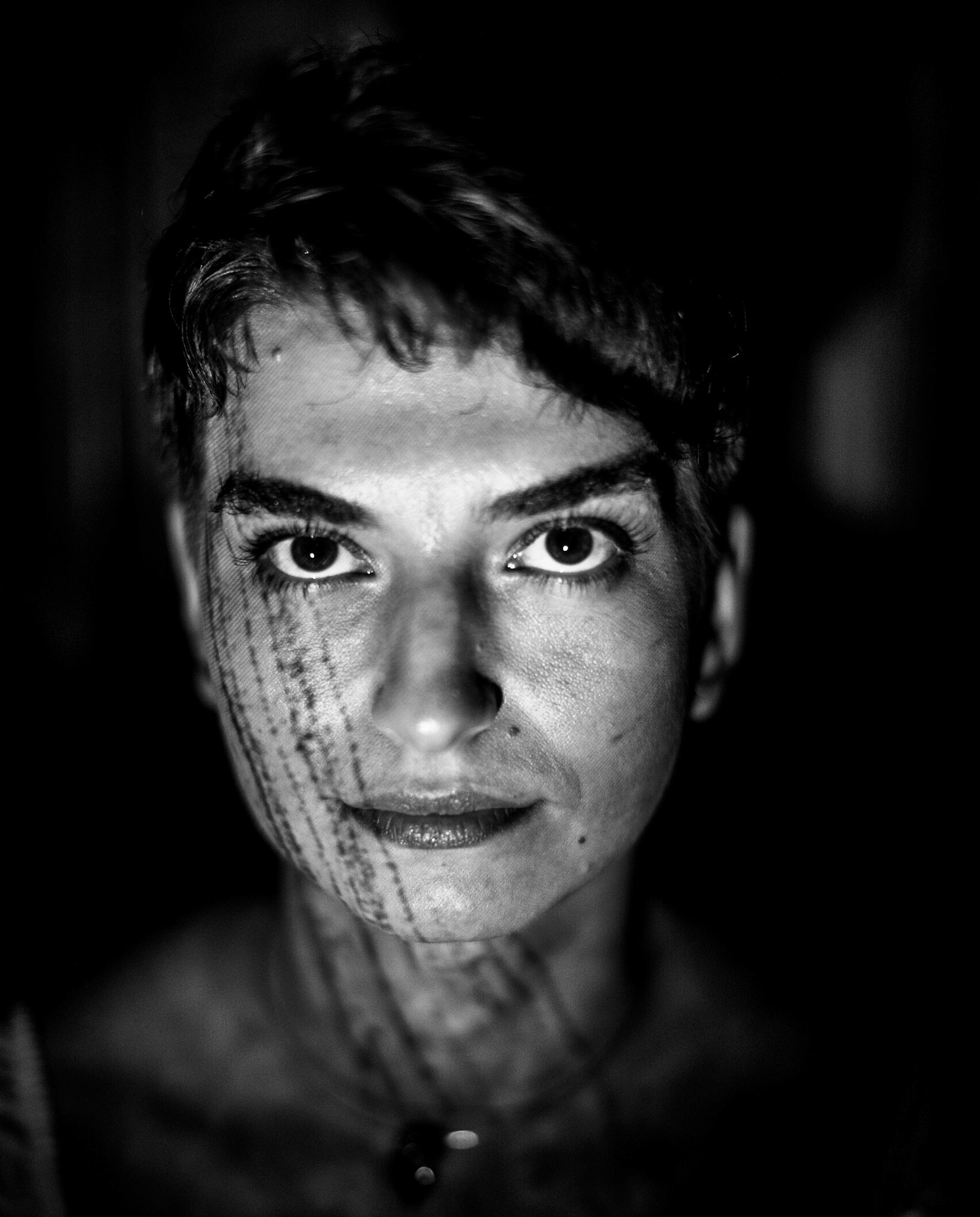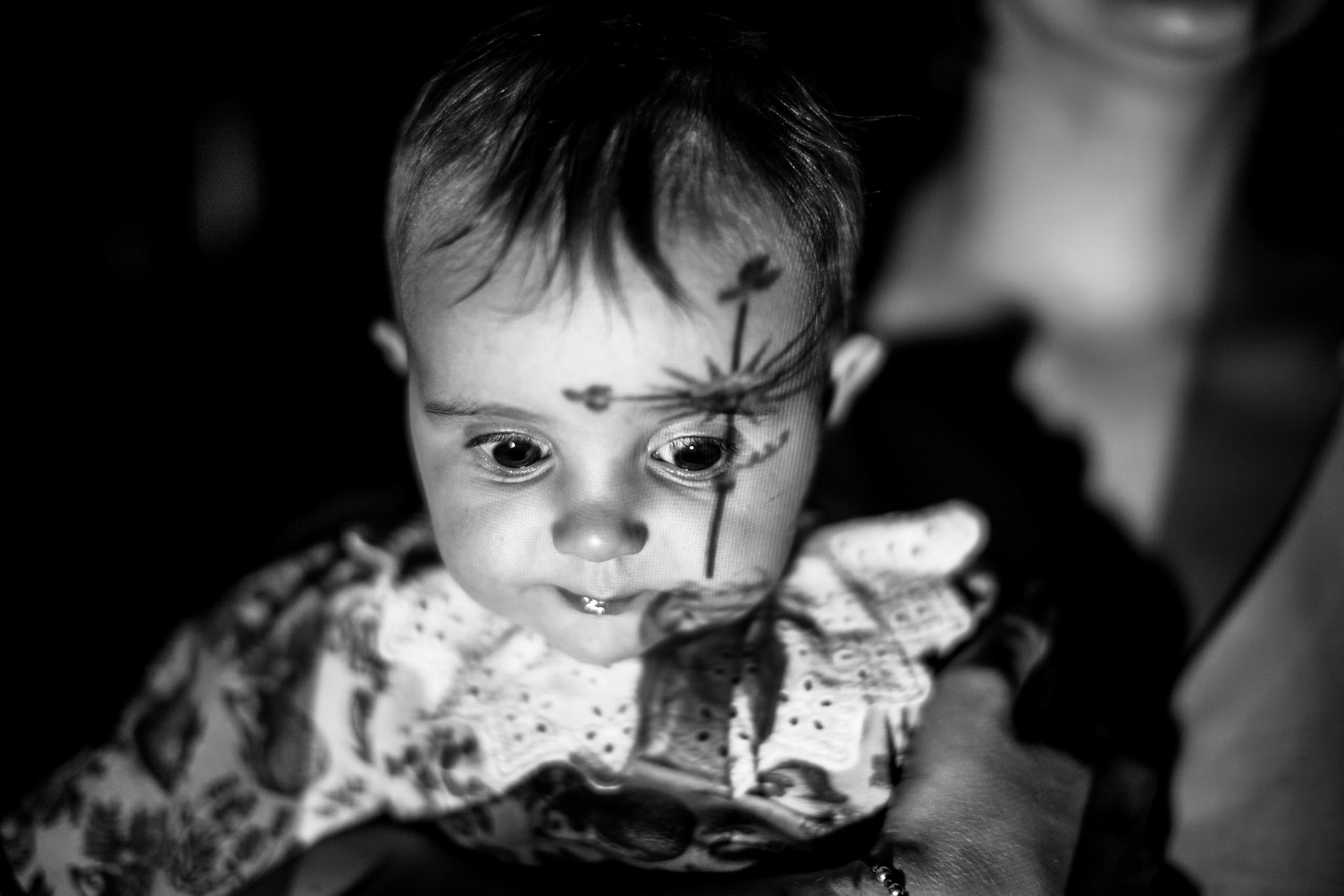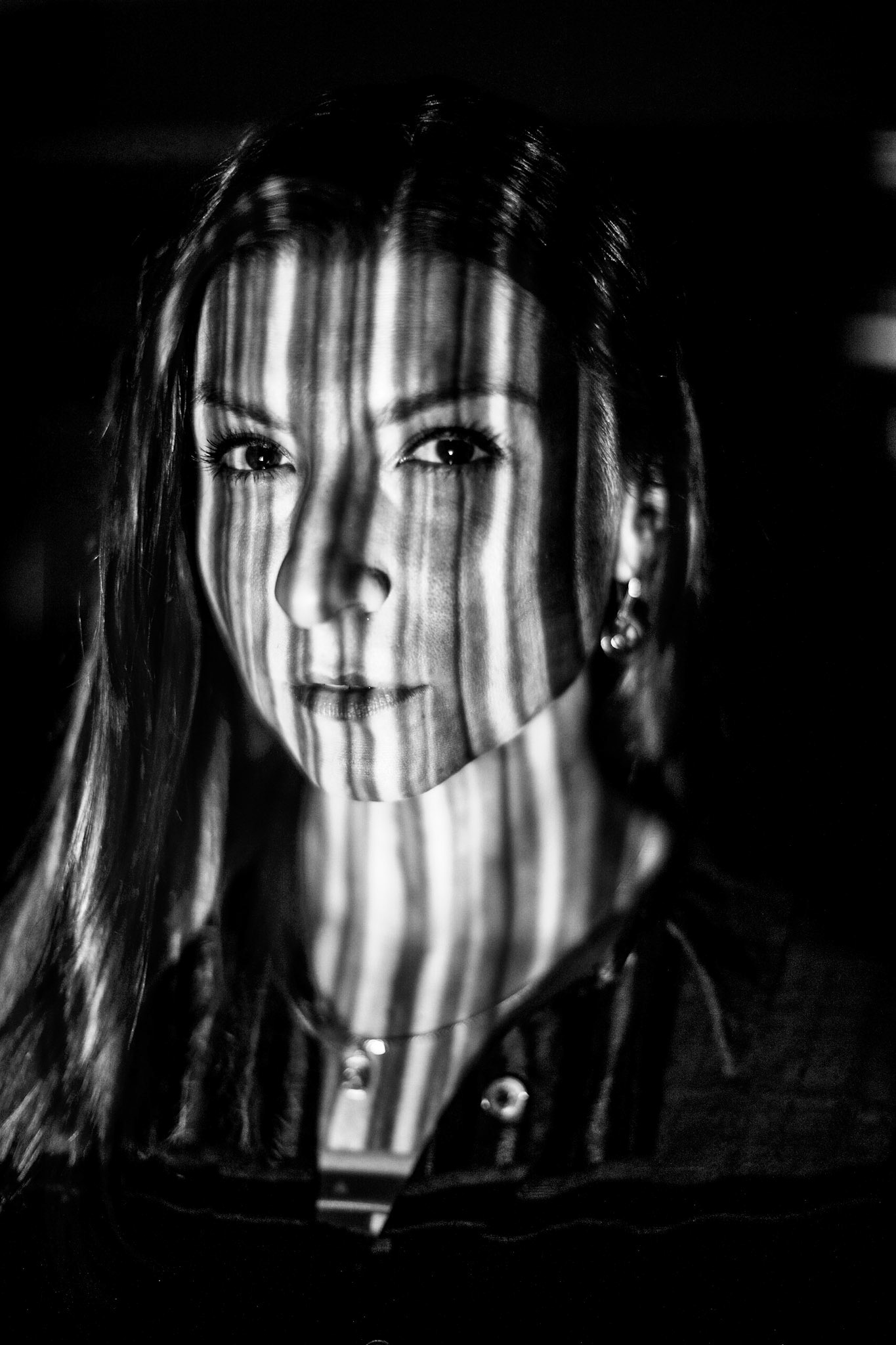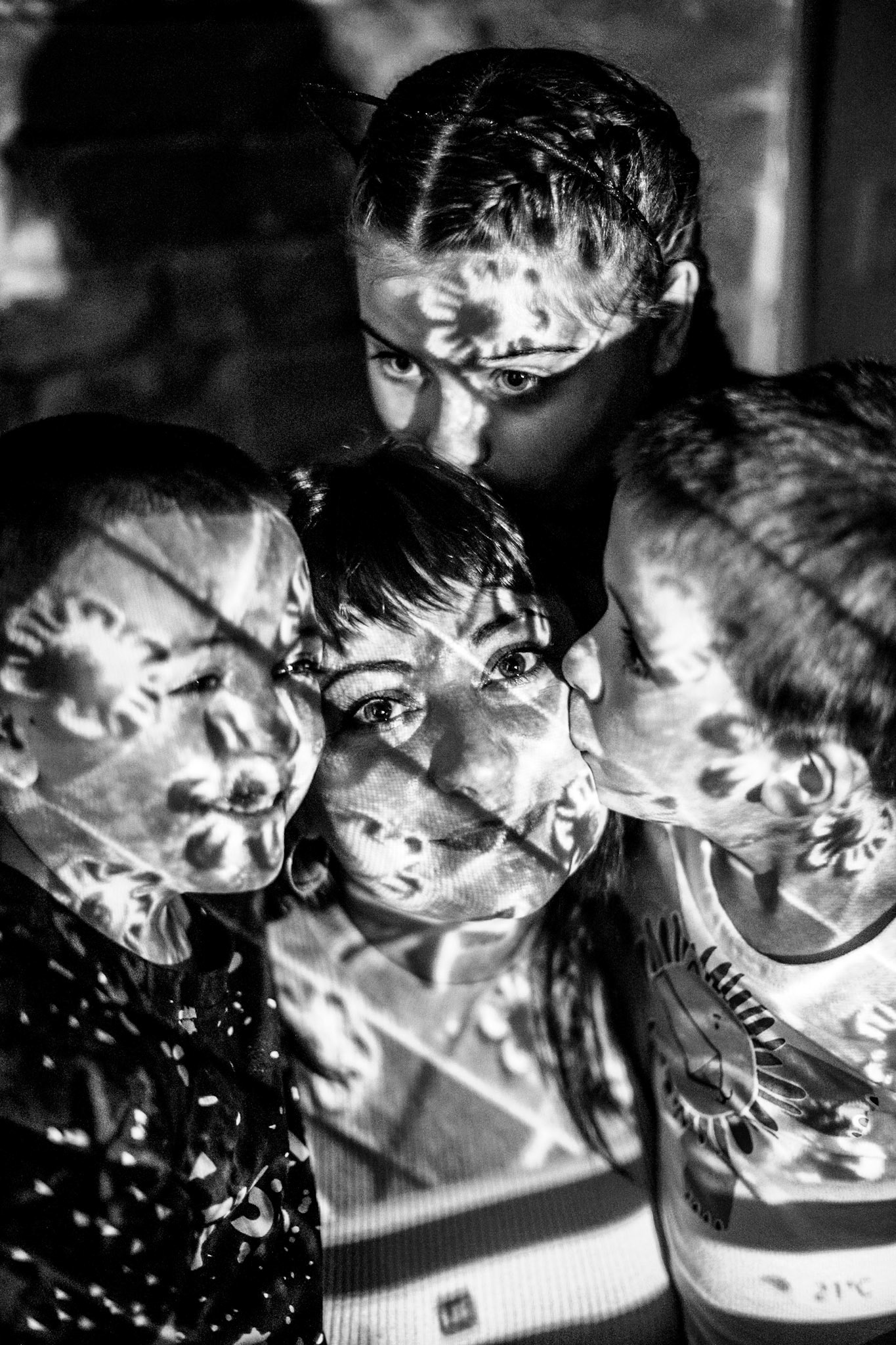View more portraits and videos at the bottom of this page
EN
At the heart of the conflict, where war drowns out the whispers of daily life, this series seeks to shed light on untold stories of resilience and hope.
Between 2023 and 2024, I traveled across Ukraine to capture the silent narratives of families left behind—parents, wives, and children of soldiers deployed at the front. A testimony of sacrifice—lived, chosen, and endured—for their present, and for the future.
From Lviv to Kharkiv, passing through Kyiv, Chernivtsi, Dnipro, Zaporizhzhia, and Pavlohrad, through my lens, I aim to capture not only faces, but the souls within them—each photo bearing witness to the strength of the people on the ground.
Drawing from my childhood memories, I found an intimate parallel with my own family history, marked by loved ones called to defend my country of origin. The uncertainty, the hope, and the waiting—I saw them again in the eyes of Ukrainian families.
This collection is more than an artistic endeavor; it is a bridge between my past and this tragic present, a mirror reflecting the shared human experience of war’s collateral damage.
By focusing especially on the women and children of Ukraine, I aim to highlight the victims and unsung heroes of this war—those who do not fight on the battlefield, but endure an inner, silent war of anxious waiting and fragile hope.
Through these portraits and stories, I hope to bear witness to the courage of these families—whose spirit cannot be extinguished by adversity. It is a prayer for peace.
Cyrus
-
The photographic style of Cyrus Atory, titled Nafas-e Ushahin in Persian, or Breath of Dawn in French, is a quest for light and soul inspired by the verses of Iranian poets.
“Dawn has lifted the veil of night, in the hope that the face of the beloved will appear to me in full daylight.”
— Hafez
— Hafez
Drawing from photographs taken during his travels — in nature, urban landscapes, or spiritual places — Cyrus Atory composes allegorical images.
One example of an allegory captured by Cyrus is a Ukrainian flag photographed in a military cemetery in Zaporizhzhia, under Russian invasion. Beaten by such strong winds that it has deteriorated over time, it still flies. This damaged yet standing flag is an allegory of resistance.
In Ukraine, Cyrus has photographed this type of image in churches, in streets that have sometimes remained untouched, others in buildings reduced to rubble by bombs, but also in the majestic nature of the country. All of them carry a symbolic strength that his work seeks to convey.
He then projects these images onto faces or bodies. These projections become intimate reflections, like imprints of the soul.
His process aims to reveal what is most raw and instinctive. It is not about staging, but about encountering the truth buried within each person.
FR
Au cœur du conflit, où la guerre éclipse les murmures de la vie quotidienne, cette série cherche à éclairer les histoires inédites de résilience et d'espoir.
Entre 2023 et 2024, j’ai parcouru l’Ukraine pour saisir les narrations silencieuses des familles restées à l’arrière : parents, épouses et enfants de soldats engagés au front. Un témoignage d’un sacrifice vécu, consenti et subi pour leur présent — et pour l’avenir.
De Lviv à Kharkiv, en passant par Kyïv, Tchernivtsi, Dnipro, Zaporijjia ou Pavlograd, à travers mon objectif, je cherche à capturer les visages, mais aussi les âmes qui les habitent— chaque photo témoignant de la force de la population sur place.
Puisant dans mes souvenirs d'enfance, j’ai trouvé un parallèle intime avec mon histoire familiale, marquée par des proches appelés à défendre mon pays d’origine. L’incertitude, l’espoir et l’attente, je les ai retrouvés dans les yeux des familles ukrainiennes.
Cette collection est plus qu'une entreprise artistique ; c'est un pont entre mon passé et ce présent tragique, un miroir reflétant l'expérience humaine partagée des dommages collatéraux de la guerre. En me concentrant en particulier sur les femmes et les enfants d'Ukraine, je vise à mettre en lumière les victimes et héros de l'ombre de cette guerre, ceux qui ne combattent pas sur les champs de bataille, mais souffrent dans une guerre intérieure et silencieuse, faite d'attente fébrile et d'espoir.
À travers ces portraits et ces histoires, j'espère apporter mon témoignage sur le courage de ces familles que l'adversité ne peut éteindre. C'est une prière pour la paix.
Cyrus
-
Le style photographique de Cyrus Atory, intitulé Nafas-e Ushahin en persan, ou Souffle de l’Aube en français, est une quête de lumière et d’âme inspirée par les vers des poètes iraniens.
"L'Aube a levé le voile de la nuit, dans l'espérance que le visage de l'aimé m'apparaisse en plein jour."
Hafez
À partir de ses photographies captées au fil de ses voyages, dans la nature, les paysages urbains ou des lieux spirituels — Cyrus Atory compose des images allégoriques.
Un exemple d’allégorie prise par Cyrus est ce drapeau ukrainien photographié dans un cimetière militaire de Zaporijjia en proie à l’invasion Russe. Battu par un vent si fort qu’il s’est abîmé avec le temps, il flotte toujours. Ce drapeau abîmé mais debout est une allégorie de la résistance.
En Ukraine, Cyrus a photographié ce type d’images dans des églises, dans des rues parfois restées intactes, d’autres dans des immeubles réduits en ruines par les bombes, mais aussi dans la nature majestueuse du pays. Toutes portent en elles une force symbolique, que son travail cherche à transmettre.
Il les projette ensuite sur des visages ou des corps. Ces projections deviennent des reflets intimes, comme des empreintes de l’âme.
Son processus vise à révéler ce qu’il y a de plus brut et instinctif. Il ne s’agit pas d’une mise en scène, mais d’une rencontre avec la vérité enfouie en chacun.
UKR
У серці конфлікту, де рев війни затьмарює шепіт повсякденного життя, серія Nafas-e Ushahin (подих світанку) прагне висвітлити незвідані історії стійкості та надії.
Я вирушаю в Україну, землю, ознаменовану відгомонами бурі, щоб зафіксувати мовчазні оповіді тих, кого залишили поза увагою: дружин і дітей військових, загиблих військових, хто воює за їхнє майбутнє. Від Львова до Чернівців, проходячи через Київ та Харків, через мій об'єктив, я намагаюся зобразити не лише обличчя, а й душі за ними, кожну історію. Кожне фото є свідченням сили та витривалості людського духу.
Я вирушаю в Україну, землю, ознаменовану відгомонами бурі, щоб зафіксувати мовчазні оповіді тих, кого залишили поза увагою: дружин і дітей військових, загиблих військових, хто воює за їхнє майбутнє. Від Львова до Чернівців, проходячи через Київ та Харків, через мій об'єктив, я намагаюся зобразити не лише обличчя, а й душі за ними, кожну історію. Кожне фото є свідченням сили та витривалості людського духу.
Озираючись на власні дитячі спогади, я знайшов вражаючу паралель в очах тих, кого я фотографував. Моя родина також відчула жорстоку руку конфлікту, мої близьк були вимушені захищати дім та країну. Той самий страх, який колись мучив мої ночі, я тепер бачу у відображені очей українських родин. Їхня невизначеність, надія, очікування, глибоко резонують з моїм власним досвідом.
Ця серія, Nafas-e Ushahin, або "Подих Світанку", це більше, ніж художній проєкт; це міст між минулим та сучасністю, дзеркало, який відображає спільний людський досвід потерпання від збитків війни. Зосереджуючись на жінках та дітях України, я прагну висвітлити тих жертв та Героїв війни, хто часто залишається поза увагою. Тих, хто не бореться на полях битв, але в тилу війни знаходиться в очікуванні та надії.
Через ці портрети та історії я хочу викликати співчуття та розуміння, щоб нагадати нам про дух стійкості, який протистоїть труднощам. Це моя пошана до стійкості, заклик бути свідками цих подій і молитися за мир.
Here are some of the 40 portraits of this collection
Open each portrait to read their story

Yana, 24, lives in Kyiv and is a student at the Ukrainian Leadership Academy (ULA). Her uncle raised her and quickly joined a volunteer battalion after February 24, 2022. The battalion was secretly sent to Mariupol. The family had no information until the commander called Yana's grandmother to inform her that her uncle had died there on May 3, 2022. She now wants to work in the army. Everyone who has lost someone wants to scream their grief and show the world what's happening here. If we don't testify and fight, there's no hope for our future.

Marta, 22, lives in Lviv where she was born. She studied philosophy and psychology. Her grandfather was a Crimean Tatar deported by the Soviet regime to Siberia. We are not just statistics. We are all different stories. Supporting Ukraine means defending every voice that was almost silenced, and every future still worth fighting for.

Bohdan, 6, and Taras, 8, are from Zymna Voda, a village in the Lviv region. In February 2022, their 34-year-old father decided to enlist in the army. He is still serving and takes part in missions in the east of the country.

Olesya and her three daughters left the Zaporizhzhia region during the Russian invasion to take refuge in Lviv. Her husband Anton joined the army five months after the invasion. As a father of three, he could have avoided conscription. He rarely comes home and keeps in touch with his wife and daughters by phone.

Baby Tereza and her mother. The husband has been fighting in the Ukrainian army since 2014. He now leads a drone unit. He goes on missions every month and manages to get regular leave to return home.

Svitlana, 65, was born in Polohy. Her son, a paratrooper in 2014, died after the Russian invasion. She often communicates with her in-laws but never meets them. Her dream is that the Ukrainian government won’t forget the families of soldiers. She regularly takes part in commemorations for fallen soldiers.

Oleksandra (Sasha), 27, was born and raised in Kharkiv, where she still lives. She is a philologist by training and worked for a long time as a translator. Her husband served in the army from 2022 to 2024 in aerial reconnaissance. He now works as a drone instructor.

Maryna from Dnipro. Her father is a soldier in an infantry combat unit. He was mobilized after the February 2022 invasion. Her mother volunteers with an organization that helps frontline soldiers. The father only rarely returns to see his family.
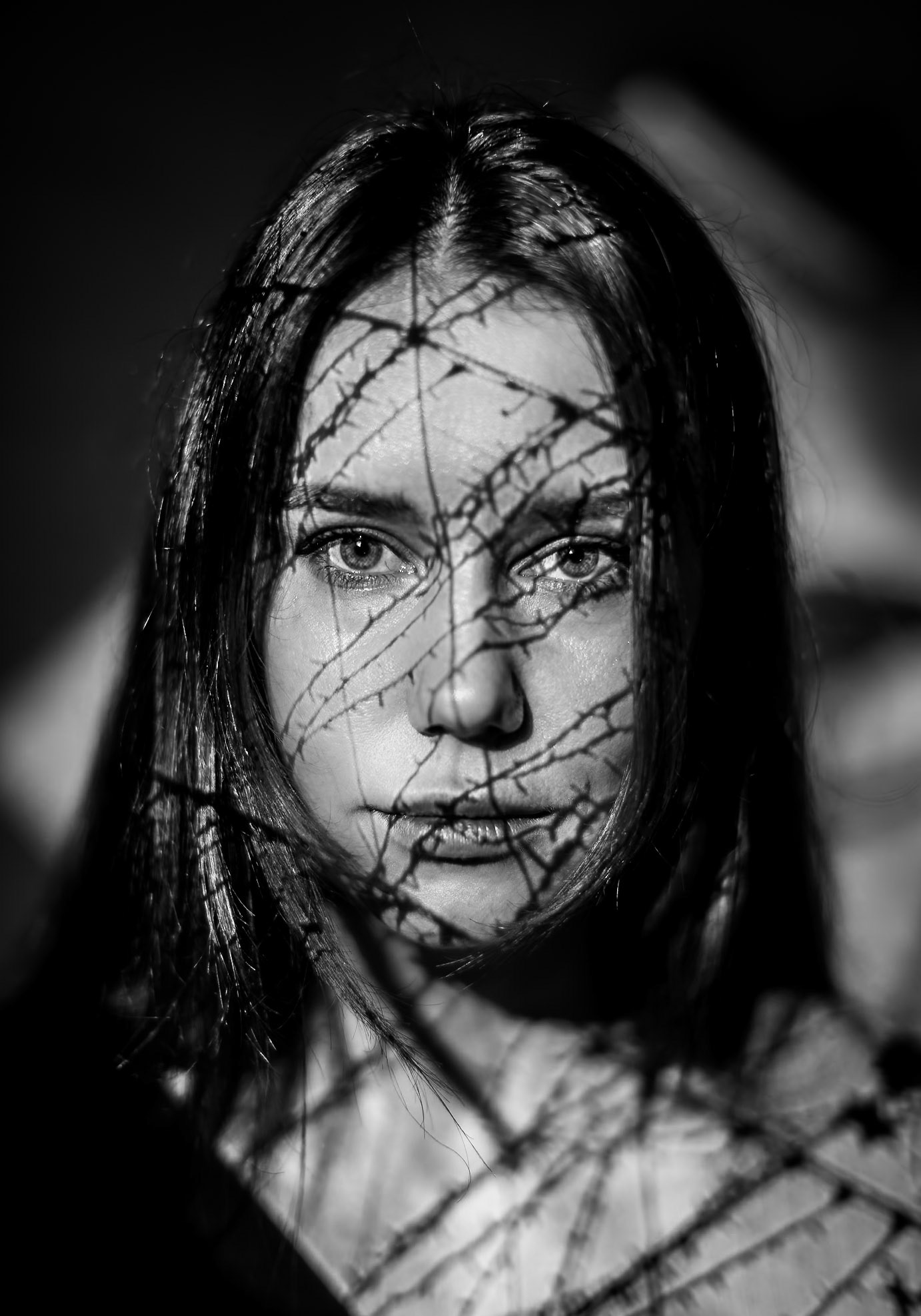
Hanna, 32, was born in the Sumy region (15 km from the Russian border), moved to Kharkiv for her studies and still lives there. She went to Donetsk and Luhansk to take photos and volunteer starting in 2014. In 2016, she met her future husband, Heorhiy Tarasenko, in Kharkiv. He died in 2022 during the counter-offensive in the Kharkiv region. He became the first military volunteer after the invasion to receive the title of 'Hero of Ukraine.' Two streets in Kharkiv now bear his name. Personally, victory in this war will never be complete because of the immense losses and the loved ones I will never share it with. Now more than ever, I understand the saying: 'Enjoy the war, the peace will be terrible.'
The following testimony was shared on Instagram in May 2025 by Sasha (@sashcore) who lives in Kharkiv, whom Cyrus Atory met in Ukraine during an improvised photo session. It sincerely illustrates the human dimension of the project and may be used in stories or press kits.
-
Today, I want to tell you about a meeting that happened to me a year ago. Honestly, it’s only now that I realize how cinematic it was… I never imagined something like this could happen to me.
One evening last May, a stranger walked into our small local bar [in Kharkiv], which also served as a volunteer hub and a refuge for kindred spirits. He had settled in the area, was exploring the surroundings, and was looking for a place to have a drink and talk with locals. Since we were a small group of English speakers, he decided to stay. That’s how I met a French photographer of Iranian origin – Cyrus. His parents had fled Iran for France, so he deeply understood our reality. And we had much to talk about.
He had come to Ukraine to work on a photo project about our women – or rather, our daughters, sisters, mothers, and wives of soldiers. He wanted to tell their stories through their faces. When Cyrus realized I was one of those women, he offered to do a photo shoot. But the very next morning, I was leaving for Dnipro to visit Zhenya, who was in the hospital.
That didn’t discourage Cyrus. A few weeks later, we met again in Dnipro. We didn’t have much time, but we wanted to show him something more authentic than the touristy riverbanks. So we took him to a friend of Zhenya’s.
It was just after Easter. The atmosphere was especially warm, full of deep conversations. That’s where Cyrus took some photos for his project.
Today, I want to tell you about a meeting that happened to me a year ago. Honestly, it’s only now that I realize how cinematic it was… I never imagined something like this could happen to me.
One evening last May, a stranger walked into our small local bar [in Kharkiv], which also served as a volunteer hub and a refuge for kindred spirits. He had settled in the area, was exploring the surroundings, and was looking for a place to have a drink and talk with locals. Since we were a small group of English speakers, he decided to stay. That’s how I met a French photographer of Iranian origin – Cyrus. His parents had fled Iran for France, so he deeply understood our reality. And we had much to talk about.
He had come to Ukraine to work on a photo project about our women – or rather, our daughters, sisters, mothers, and wives of soldiers. He wanted to tell their stories through their faces. When Cyrus realized I was one of those women, he offered to do a photo shoot. But the very next morning, I was leaving for Dnipro to visit Zhenya, who was in the hospital.
That didn’t discourage Cyrus. A few weeks later, we met again in Dnipro. We didn’t have much time, but we wanted to show him something more authentic than the touristy riverbanks. So we took him to a friend of Zhenya’s.
It was just after Easter. The atmosphere was especially warm, full of deep conversations. That’s where Cyrus took some photos for his project.



A collaboration with the “Association of Mothers and Wives of Defenders of Ukraine”
This organization supports the families of Ukrainian soldiers, especially women (wives, daughters, mothers), in their mourning, administrative struggles, and disrupted daily lives.
It allowed Cyrus Atory to meet several families living through this often unseen reality, like in the video below (Pavlorad). This exhibition is dedicated to them.
Visitors who wish to can support the association by making a donation at www.familyato.org.
It allowed Cyrus Atory to meet several families living through this often unseen reality, like in the video below (Pavlorad). This exhibition is dedicated to them.
Visitors who wish to can support the association by making a donation at www.familyato.org.
